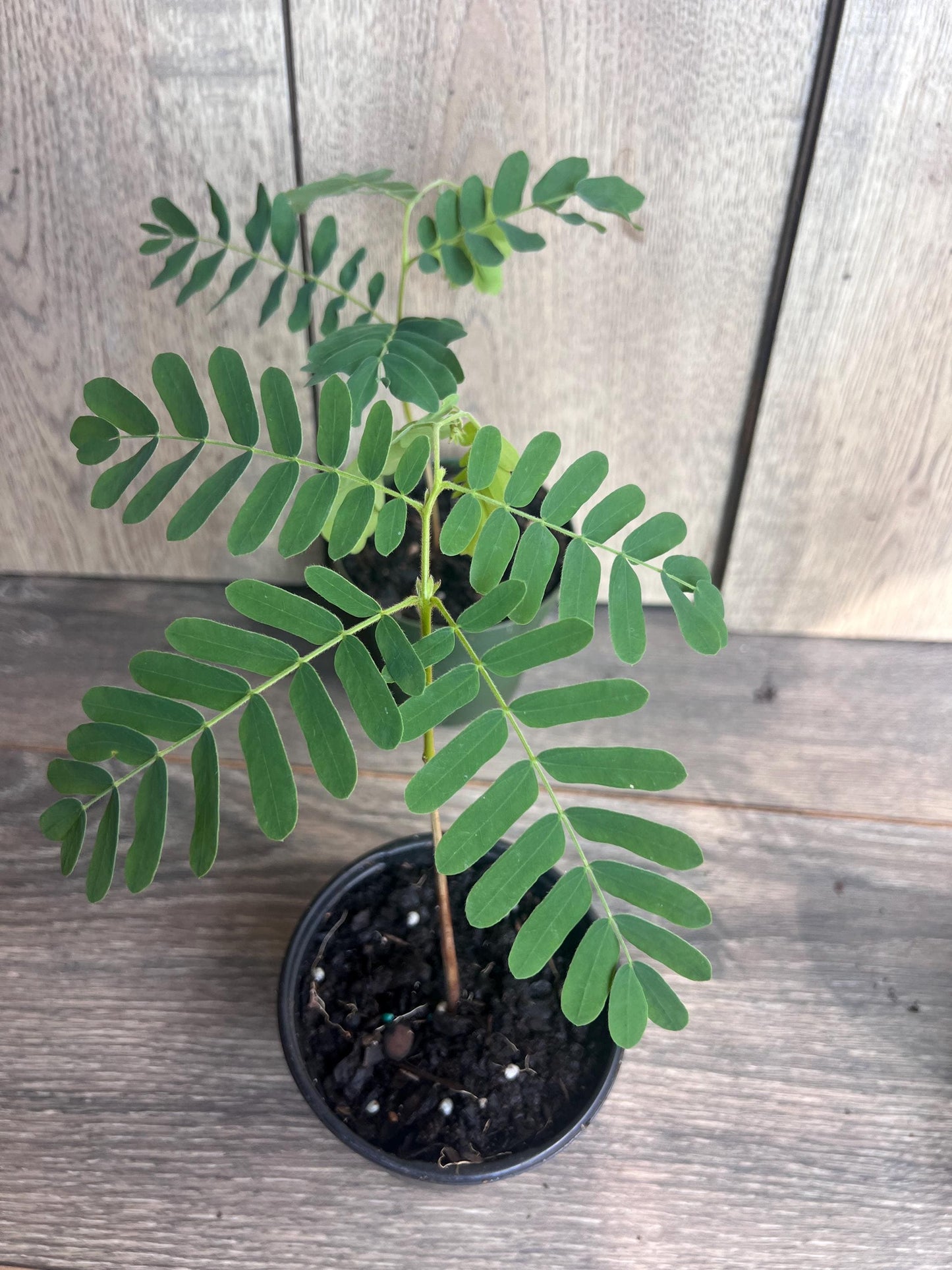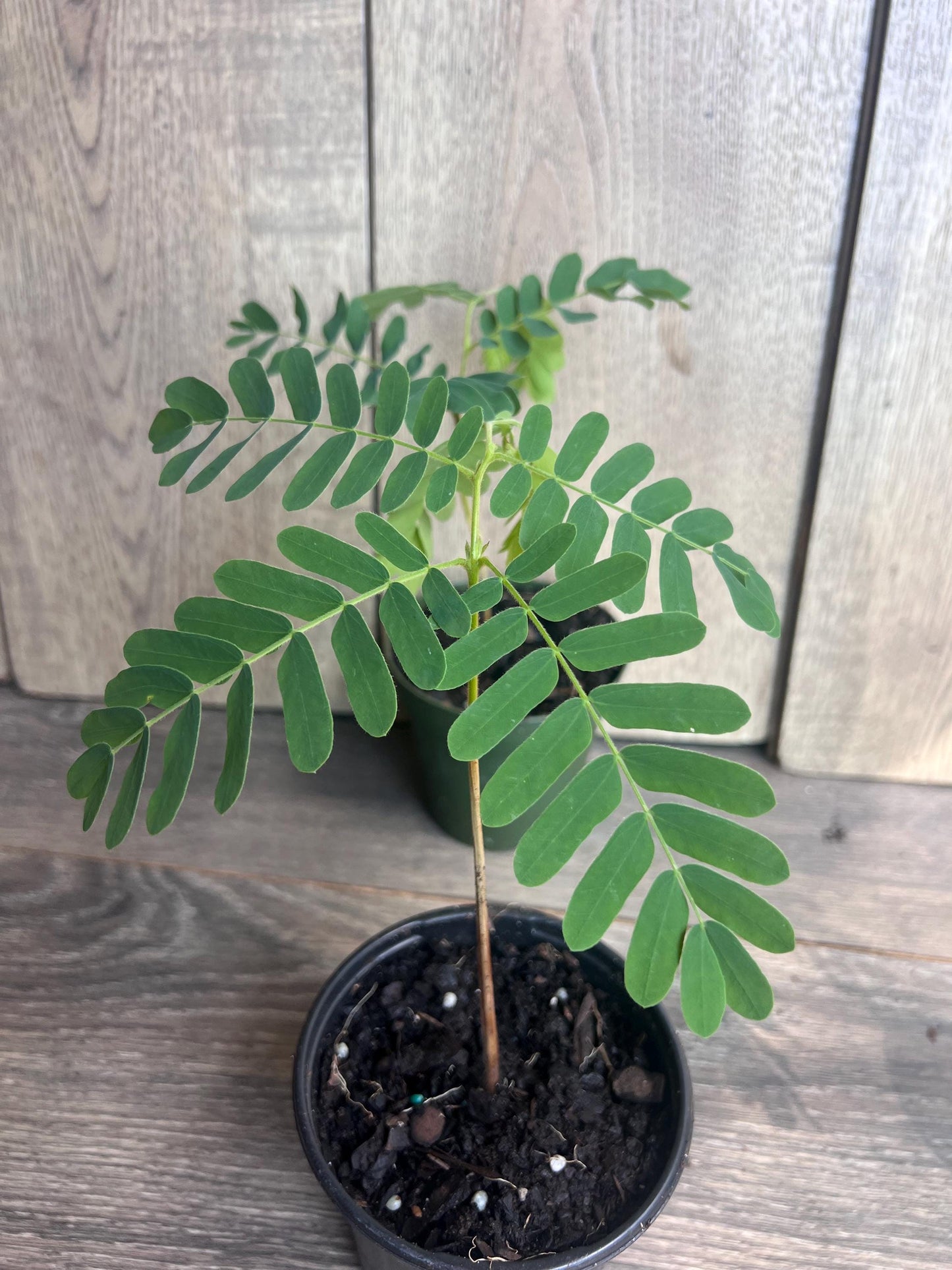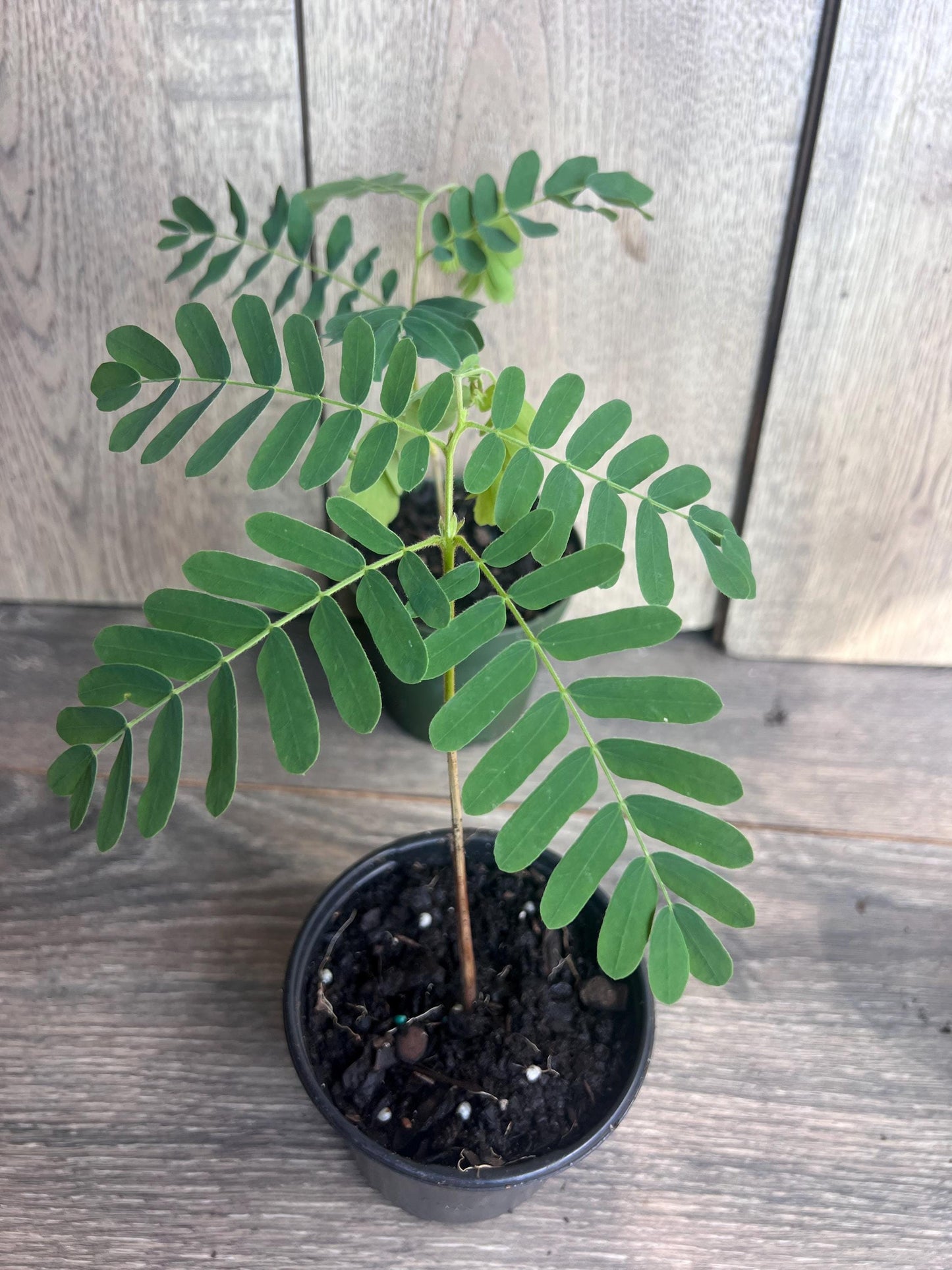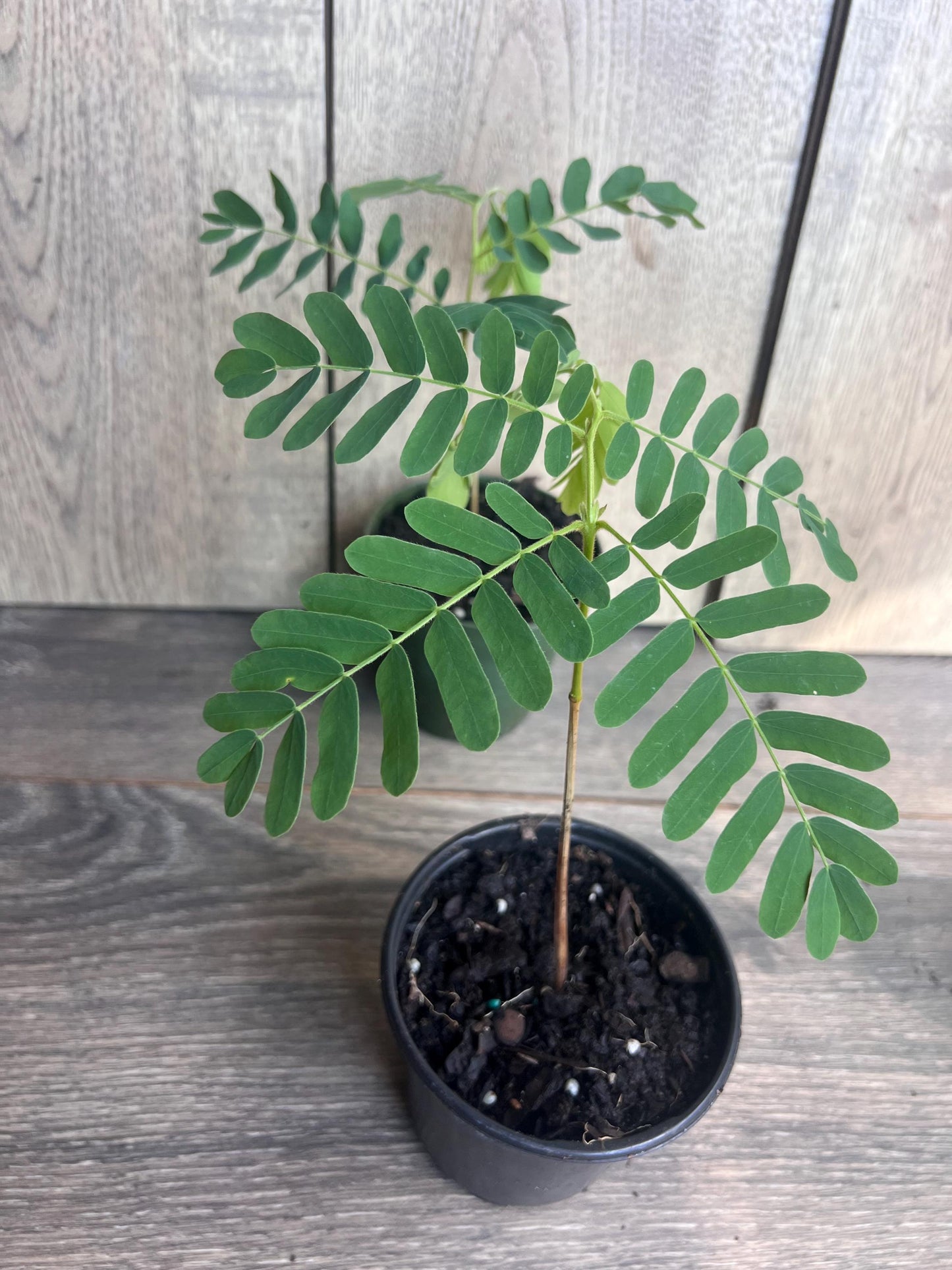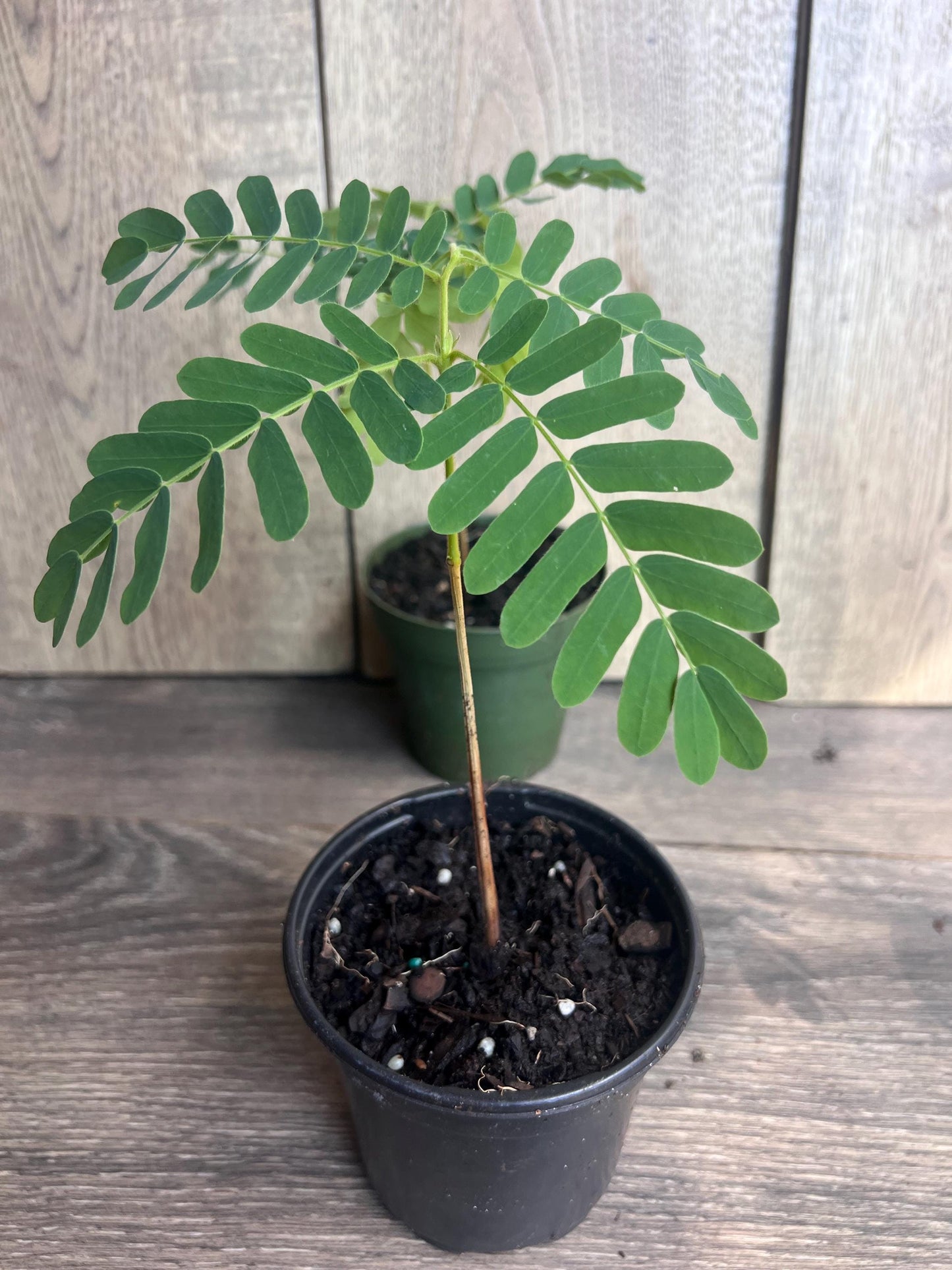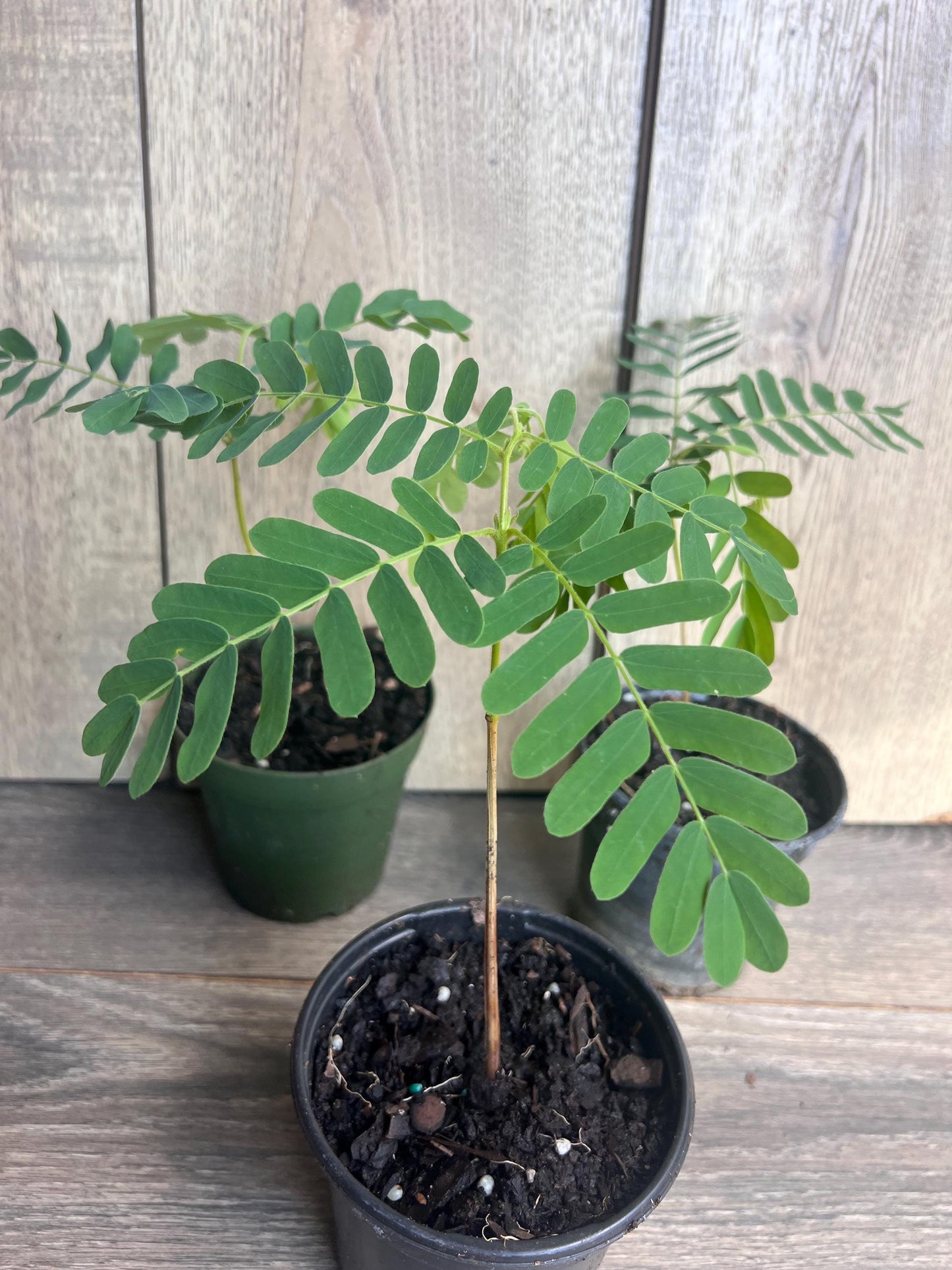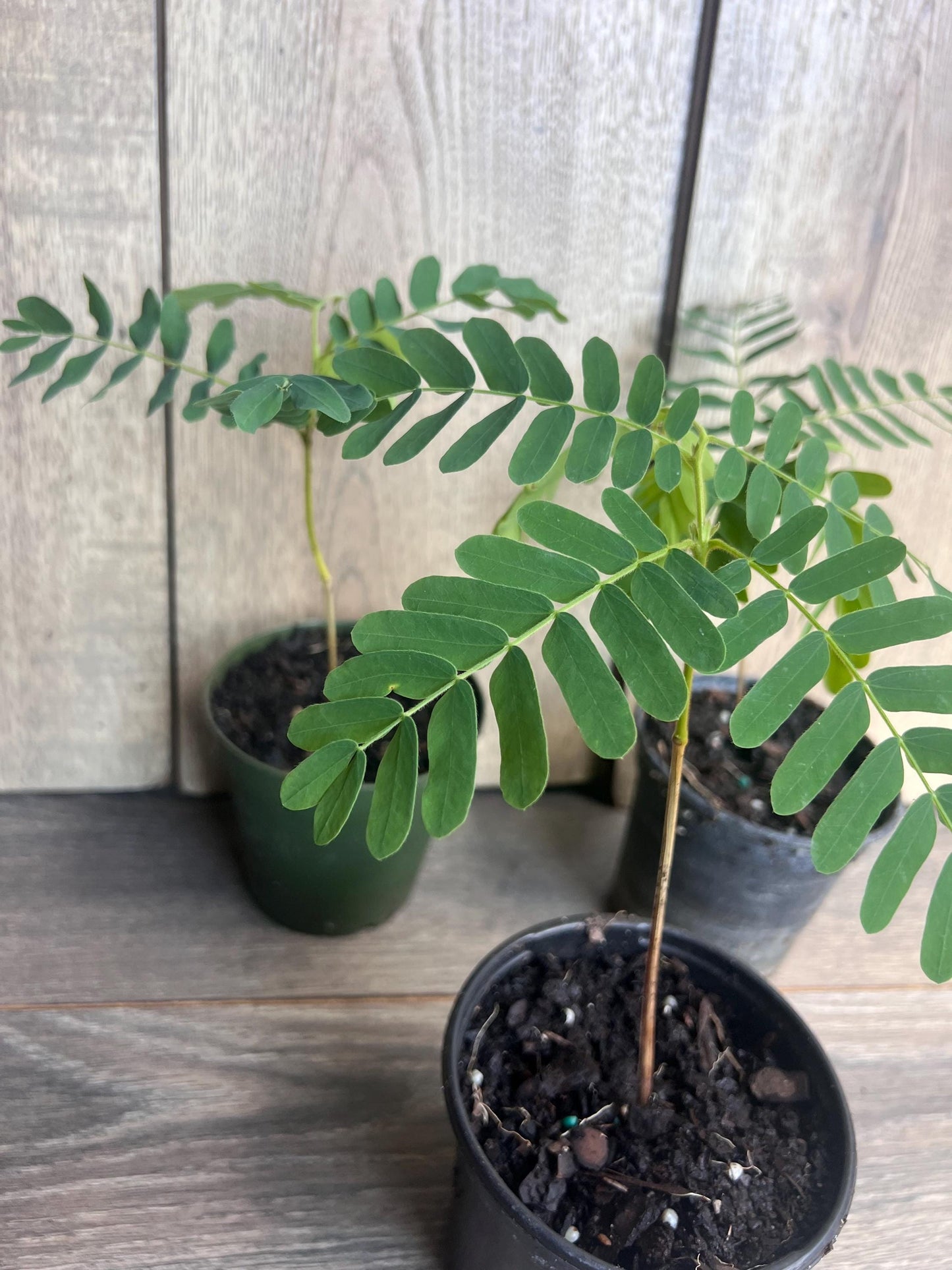Tamarind tree, Tamarindus indica in 4" Pot, Pohon Asem
Tamarind tree, Tamarindus indica in 4" Pot, Pohon Asem
Couldn't load pickup availability
Note: You will receive one Tamarind tree in 4" pot similar to the pictures
Tamarind (Tamarindus indica) is a tropical tree native to Africa, widely grown in tropical and subtropical regions globally, including Asia and Latin America. It is renowned for its tangy-sweet fruit, which grows in long, pod-like casings containing sticky pulp. This fruit is used in cooking, beverages, sauces, and chutneys, and the tree itself is valued for its shade and medicinal properties. The tree can grow up to 80 feet tall, with feathery leaves and small, yellow flowers. Tamarind fruit is rich in vitamins, minerals, and antioxidants.
Tamarind thrives in tropical and subtropical climates with warm temperatures and well-drained, sandy loam soil. It is relatively drought-tolerant once established but benefits from regular watering during dry periods. The tree requires full sun for optimal growth and fruit production and is not frost-tolerant, making it suitable for regions with warm temperatures year-round. Tamarind trees start bearing fruit after 5-8 years, and the pods are harvested when they turn brown and crinkled.
Key Care Tips for Tamarind
1. Light Requirements
- Full Sun: Tamarind trees need 6-8 hours of direct sunlight each day for healthy growth and fruiting. A sunny location is essential, especially for container-grown trees.
2. Temperature
- Warm Temperatures: Tamarind prefers temperatures between 77°F and 95°F (25°C to 35°C). It is not frost-tolerant and can be damaged by temperatures below 50°F (10°C). In cooler climates, grow tamarind in a container to bring indoors during winter.
3. Soil Requirements
- Well-Draining, Sandy Loam Soil: Tamarind thrives in soil that is slightly acidic to neutral (pH 6.0–7.5) and drains well. Avoid heavy, clay soils, which can cause waterlogging and root rot.
4. Watering
- Moderate Watering: Tamarind trees are drought-tolerant but benefit from regular watering during the growing season (spring and summer). Water deeply, allowing the soil to dry out between waterings. Overwatering can lead to root rot, so ensure good drainage.
- Reduce Watering in Winter: During the dormant period, reduce watering as the tree requires less moisture in cooler temperatures.
5. Fertilizing
- Moderate Fertilization: Tamarind trees benefit from feeding during the growing season with a balanced, slow-release fertilizer (NPK 10-10-10). Avoid excess nitrogen, which can encourage excessive foliage growth rather than fruiting.
- Organic Options: Compost or well-aged manure are good organic fertilizers to improve soil quality and support healthy growth.
6. Pruning and Maintenance
- Minimal Pruning: Tamarind trees require little pruning. Trim to shape, remove dead or damaged branches, and thin out dense growth to improve airflow and sunlight penetration.
- Encourage Healthy Growth: Remove suckers (shoots from the base) to promote strong, central growth.
7. Pests and Diseases
- Pests: Tamarind trees are resistant to most pests but may attract mealybugs, scale insects, or aphids. Treat infestations with neem oil or insecticidal soap.
- Root Rot: Overwatering and poor drainage can cause root rot. Ensure the soil drains well and allow it to dry out between waterings.
- Fungal Infections: Tamarind trees can be susceptible to fungal issues in humid climates. Maintain good air circulation and avoid overhead watering.
8. Repotting (for Container-Grown Trees)
- Container Size: Use a large pot (15-20 gallons) with drainage holes. Repot every 2-3 years or when the tree outgrows its container. Ensure fresh, well-draining soil is used for repotting.
9. Harvesting
- Fruit Production: Tamarind trees typically start producing fruit after 5-8 years, depending on climate and care. The fruit is ready for harvest when the pods turn brown and feel crinkled, with sticky, sweet-tart pulp inside.
10. Growing in Containers (for Cooler Climates)
- Container Care: In cooler climates, tamarind can be grown in containers and brought indoors during winter. Ensure the container is large enough to accommodate root growth and the tree receives plenty of sunlight indoors.
- Temperature Management: Keep the indoor environment warm and avoid drafts. If temperatures drop too much, the tree may go dormant or fail to produce fruit.
Summary
Tamarind trees require full sun, warm temperatures (77°F to 95°F), and well-draining, sandy loam soil to thrive. They are drought-tolerant once established but benefit from regular watering during the growing season. Moderate fertilization, organic options like compost, and minimal pruning support healthy growth. Tamarind trees are generally resistant to pests but can suffer from root rot and fungal infections if overwatered or not spaced properly. For cooler climates, tamarind can be grown in containers, but it needs protection from frost. With the right care, tamarind trees will reward you with their unique, tangy-sweet fruit after several years of growth.
Share
